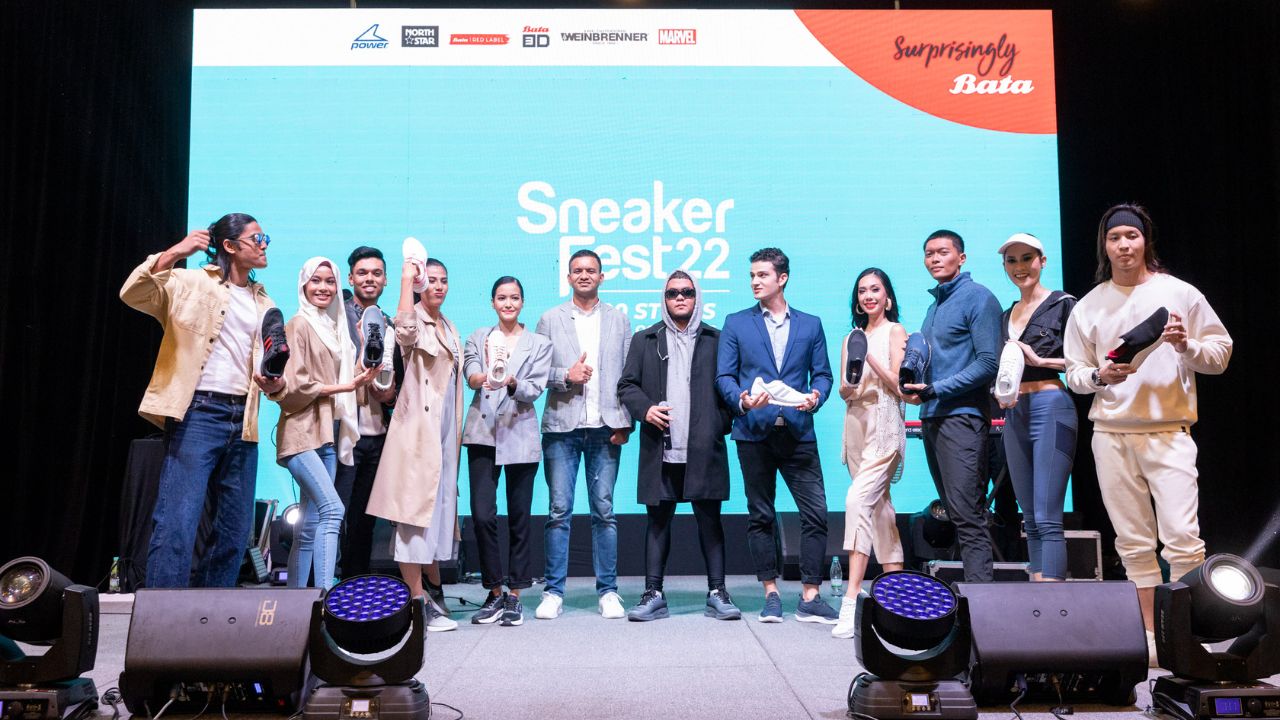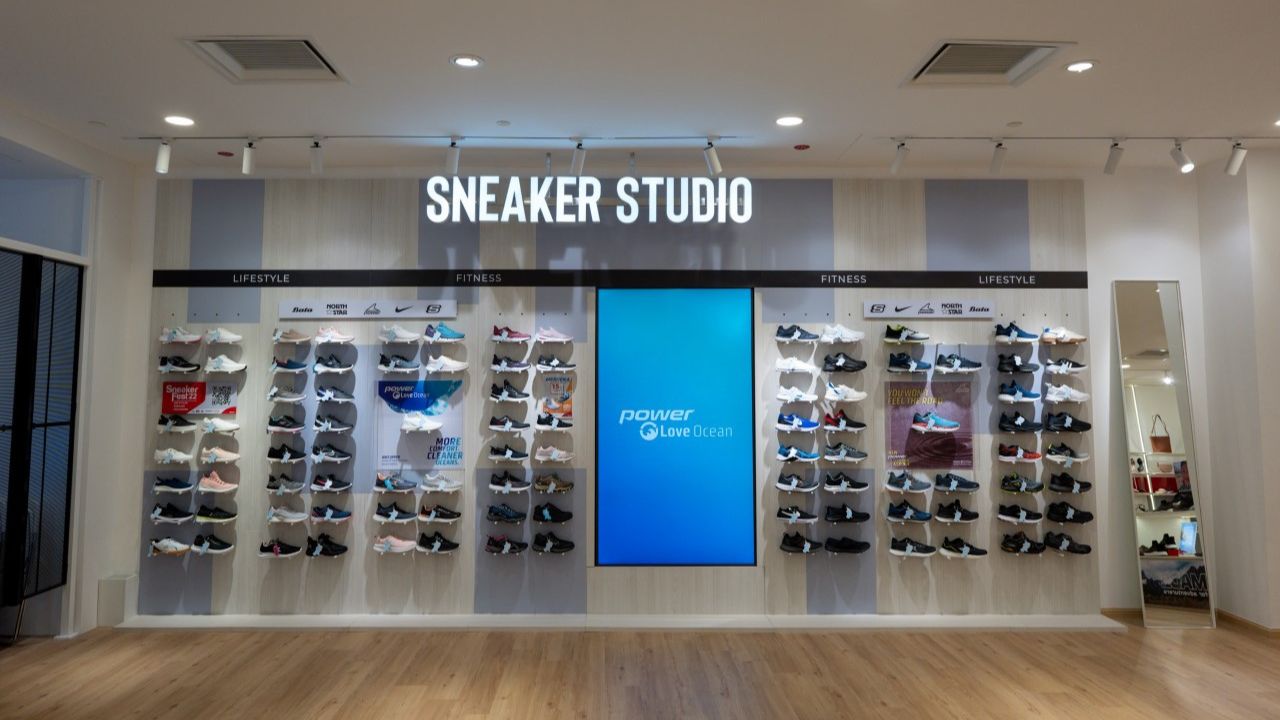We spoke to Vaibhav Manrao, the Country Manager of Bata Malaysia recently at his office at PJ Trade Centre, the headquarters of Bata Malaysia.
Our conversation opens on his perception of Bata as a brand and his thoughts about it being perceived as “local”.
A native of India, his reply was rather humorous. Apparently, while growing up in India, he thought that Bata was a local Indian brand.
Looks like everywhere Bata goes, people think the same thing.
The shoe company has been ingrained in Malaysian culture since 1930, with the first store opening in Singapore and subsequently Penang.
Back then, the factory was in Klang and employed over 2,200 workers who produced Bata shoes to be exported internationally.

The marketing copy “First to Bata, then to school” was probably the reason why so many of us had Bata shoes growing up and why it still holds the perception as a local school shoe brand.
That said, we asked if school shoes were their main source of income and to our surprise Vaibhav said no. “Very little of our sales comes from our school shoes.”
The 2nd biggest contributor of sales in Bata are their sneakers and women’s shoes lead in terms of sales. Sneakers (including men, women, and children’s ranges) contribute over 30% of total sales which leads us to the reason why we were given the opportunity to speak to Vaibhav in the first place.
“It’s a real push that is required. You’re not the first one to tell me that Bata is perceived as a school shoe brand or a dress shoe brand for that matter.”
“Casualisation and sneakerisation is an important strategy that we’re working on,” said Vaibhav and the recently launched Sneaker Studio is a push in that direction.
The Sneaker Studio is a subsection within Bata retail stores and its online store where they offer “200 styles to match endless occasions” (though we only counted 190 designs on Bata.com.my, we'll take their word for it that it'll add up with designs in store).
There’s a lot of sneaker speak here so bear with us. Bata launched Sneaker Fest 22 at SneakerLah 2022 to promote Sneaker Studio which has lots of styles for all occasions.
“There’s a different aura that’s created in the store, a different look and feel to cater to the sneaker consumer because they want to shop differently.”

Vaibhav mentioned that since the event, they’re seen a “sea change” in their North Star brand sales with more than double sales according to him and he attributes the sale to the change in consumer behavior that shops for comfort after the pandemic.
Like all of its initiatives, Sneaker Studio is a global initiative so on a global scale, Sneaker Studios will be strategically rolled out in stages.
Another part of this perception change is also the way Bata approaches retail and they’re revamping their flagship KLCC store which will set the tone for the brand moving forward. The store’s official launch is slated for November, we’ll be following the launch of that store with great interest.
We spoke about the 20 to 30 age group of consumers and what a brand has to do to reach them but he couldn’t reveal more than the fact that Bata will be on TikTok soon.
Almost immediately we looked for a Bata TikTok and found out that Bata Indonesia actually has a TikTok account with some videos going up to 300k views.
In Malaysia, when something is labelled local, you may not have the best perception of it. Though there’s movements like sapot lokal and the Petronas earworm belilah lokal song, generally Malaysians are wary of buying local.
To dispel any thoughts you may have that maybe in some way Bata is local, we found out that more than 80% of products by Bata are designed and produced overseas in Singapore, Canada, and Italy, amongst other regions.
“Consumers should know that we are a global brand, but we are not unhappy that we are perceived as a local brand”
He continued that being perceived as local is a brand position that’s desirable for Bata and not one they want to fight against or change.
Genericization has helped many other brands like Tupperware or Pampers in Malaysia where nowadays all plastic containers are Tupperwares and all diapers are Pampers. Though you don’t call your school shoes Batas, you do assume they all come from Bata.
Vaibhav mentioned that you go to Bata twice in your life, once when you enter school and again when you enter the workforce with formal shoes. The in-between 20 to 30 crowd is where ‘cool’ comes in and is where Bata’s real challenge still remains.
Who knows, maybe we’ll see a proliferation of North Star shoes around Malaysia in the next year or so and you can trace the change to the Sneaker Studio and revamped retail outlets.
What do you think? Is Bata cool? Will it ever be cool? Can it?
Our conversation opens on his perception of Bata as a brand and his thoughts about it being perceived as “local”.
A native of India, his reply was rather humorous. Apparently, while growing up in India, he thought that Bata was a local Indian brand.
Looks like everywhere Bata goes, people think the same thing.
Bata’s history in Malaysia
The shoe company has been ingrained in Malaysian culture since 1930, with the first store opening in Singapore and subsequently Penang.
Back then, the factory was in Klang and employed over 2,200 workers who produced Bata shoes to be exported internationally.

The marketing copy “First to Bata, then to school” was probably the reason why so many of us had Bata shoes growing up and why it still holds the perception as a local school shoe brand.
That said, we asked if school shoes were their main source of income and to our surprise Vaibhav said no. “Very little of our sales comes from our school shoes.”
The 2nd biggest contributor of sales in Bata are their sneakers and women’s shoes lead in terms of sales. Sneakers (including men, women, and children’s ranges) contribute over 30% of total sales which leads us to the reason why we were given the opportunity to speak to Vaibhav in the first place.
Making Bata cool, somehow

“It’s a real push that is required. You’re not the first one to tell me that Bata is perceived as a school shoe brand or a dress shoe brand for that matter.”
“Casualisation and sneakerisation is an important strategy that we’re working on,” said Vaibhav and the recently launched Sneaker Studio is a push in that direction.
The Sneaker Studio is a subsection within Bata retail stores and its online store where they offer “200 styles to match endless occasions” (though we only counted 190 designs on Bata.com.my, we'll take their word for it that it'll add up with designs in store).
There’s a lot of sneaker speak here so bear with us. Bata launched Sneaker Fest 22 at SneakerLah 2022 to promote Sneaker Studio which has lots of styles for all occasions.
“There’s a different aura that’s created in the store, a different look and feel to cater to the sneaker consumer because they want to shop differently.”

Vaibhav mentioned that since the event, they’re seen a “sea change” in their North Star brand sales with more than double sales according to him and he attributes the sale to the change in consumer behavior that shops for comfort after the pandemic.
Like all of its initiatives, Sneaker Studio is a global initiative so on a global scale, Sneaker Studios will be strategically rolled out in stages.
Another part of this perception change is also the way Bata approaches retail and they’re revamping their flagship KLCC store which will set the tone for the brand moving forward. The store’s official launch is slated for November, we’ll be following the launch of that store with great interest.
We spoke about the 20 to 30 age group of consumers and what a brand has to do to reach them but he couldn’t reveal more than the fact that Bata will be on TikTok soon.
Almost immediately we looked for a Bata TikTok and found out that Bata Indonesia actually has a TikTok account with some videos going up to 300k views.
@bataofficialstore Hi Marie Claire Ladies, happy weekend!? mimin kasih rekomendasi sepatu ala ala korea nih ya buat ngelengkapin ootd kalian? #bata #marieclaire #bataindonesia #fyp #FlexEveryAngle ♬ Creepy Violins - Apollo Nove
Bata’s is not a local brand
In Malaysia, when something is labelled local, you may not have the best perception of it. Though there’s movements like sapot lokal and the Petronas earworm belilah lokal song, generally Malaysians are wary of buying local.
To dispel any thoughts you may have that maybe in some way Bata is local, we found out that more than 80% of products by Bata are designed and produced overseas in Singapore, Canada, and Italy, amongst other regions.
“Consumers should know that we are a global brand, but we are not unhappy that we are perceived as a local brand”
He continued that being perceived as local is a brand position that’s desirable for Bata and not one they want to fight against or change.
Genericization has helped many other brands like Tupperware or Pampers in Malaysia where nowadays all plastic containers are Tupperwares and all diapers are Pampers. Though you don’t call your school shoes Batas, you do assume they all come from Bata.
Vaibhav mentioned that you go to Bata twice in your life, once when you enter school and again when you enter the workforce with formal shoes. The in-between 20 to 30 crowd is where ‘cool’ comes in and is where Bata’s real challenge still remains.
Who knows, maybe we’ll see a proliferation of North Star shoes around Malaysia in the next year or so and you can trace the change to the Sneaker Studio and revamped retail outlets.
What do you think? Is Bata cool? Will it ever be cool? Can it?







